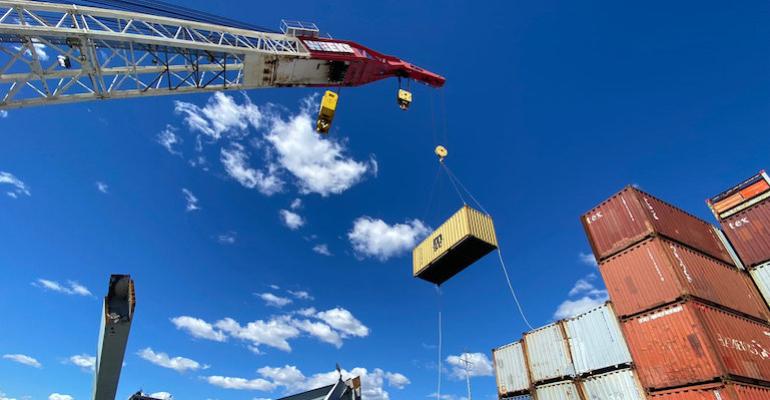The US Army Corp of Engineers (USACE), the agency responsible for maintenance of waterway infrastructure in the States, has announced a tentative target date of end April for opening a channel with a 35-foot depth (10.6 metres). While not supporting transits for the deepest draft containerships, bulkers and tankers, this depth would smaller containerships of circa 4,500 teu to enter the port.
USACE has said: “After detailed studies and engineering assessments by local, state and federal organizations, in collaboration with industry partners, USACE expects to open a limited access channel 280 feet wide and 35 feet deep, to the Port of Baltimore within the next four weeks – by the end of April. This channel would support one-way traffic in and out of the Port of Baltimore for barge container service and some roll on/roll off vessels that move automobiles and farm equipment to and from the port.” Automobile and ro-ro traffic has been a mainstay of the port.
Meanwhile the removal of containers has started from stricken Singapore-flagged containership Dali. Unified Command for the incident said that salvors started to remove cargo from the vessel on Sunday. “The transfer of containers from the Dali will continue in the coming days, as weather permits,” it said.
All going well, the deeper vessels might be calling at the port within two months, in line with estimates from the Deutsche Bank equity research team led by Amit Mehrotra. Shortly after the end March accident, research coverage of the CSX railway (a major user of the port) had suggested this type of time frame.
The analysts, in their late-March publication discussing a temporary decrease in deepsea coal stems moving through its Curtis Bay Coal Terminal (inside the port), had said, “The bottom line is that CSX's weekly coal volumes are likely to be down a lot in the coming weeks; if we assume an impact for two months, we see max potential for about 30k lower coal carloads.”
USACE, in a release, said: “USACE engineers are aiming to reopen the permanent, 700-foot-wide by 50-foot-deep federal navigation channel by the end of May, restoring port access to normal capacity.
Copyright © 2024. All rights reserved. Seatrade, a trading name of Informa Markets (UK) Limited.
Add Seatrade Maritime News to your Google News feed.  |

